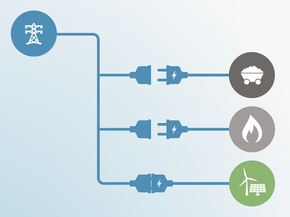Assumptions
Historical data
The historical data are based on 2016 national inventory submissions (CRF, 2016). As there are only minor differences compared to the 2017 national inventory submission, we did not update the historical data.
Pledges
Target emission levels for 2020, 2030 and 2050 were calculated from the 2016 national inventory submissions (CRF, 2016). For Ukraine’s Copenhagen Pledge and NDC, we apply an accounting method that subtracts the projected LULUCF sink, assuming that LULUCF emissions in 2020 and 2030 remain at the historical average level over 2003–2012 (-30 MtCO2e), from the target level incl. LULUCF for 2030.
We calculated Ukraine's LULUCF accounting quantities for the first commitment period (2008–2012) for afforestation, reforestation and deforestation using the current Kyoto rules. The Ukraine has submitted information on their forest reference level, which is equal to their 1990 forest management emissions and removals.
Current policy projections
The historical data are based on 2016 national inventory submissions (CRF, 2016). As there are only minor differences compared to the 2017 national inventory submission, we did not update the historical data. The current policy projections are based on the ‘without measures’ and ‘with measures’ scenarios from Ukraine’s Sixth National Communication (CRF, 2016). The ‘with measures’ scenario includes the Underlying Principles (Strategy) of the State Environmental Policy of Ukraine, the National Plan on Climate Change Mitigation and Prevention of Human Impact on Climate Change for the Period up to 2030 and the Energy Strategy for Ukraine until 2030. However, due to the current political instability and the lack of clear supporting policies tabled or discussed, except for the feed-in tariff mechanism, it is not certain that the ‘with measures’ scenario is an adequate reflection of Ukraine’s current policy pathway. For this reason, the ‘without measures’ scenario, which assumes that GHG emission footprints of all sectors of the economy will remain constant, is included as the upper bound to the current policy projection range. However, both scenarios assume an annual GDP growth of 2.9% between 2010 and 2020, whereas actual GDP has decreased by 1.5% annually since 2010 (World Bank Group, 2015). This overestimation of GDP growth suggests that the emission projections in both scenarios may be inflated.
At the moment, there are no alternative sources available to develop other current policy projections for Ukraine.
Further analysis
Latest publications
Stay informed
Subscribe to our newsletter






